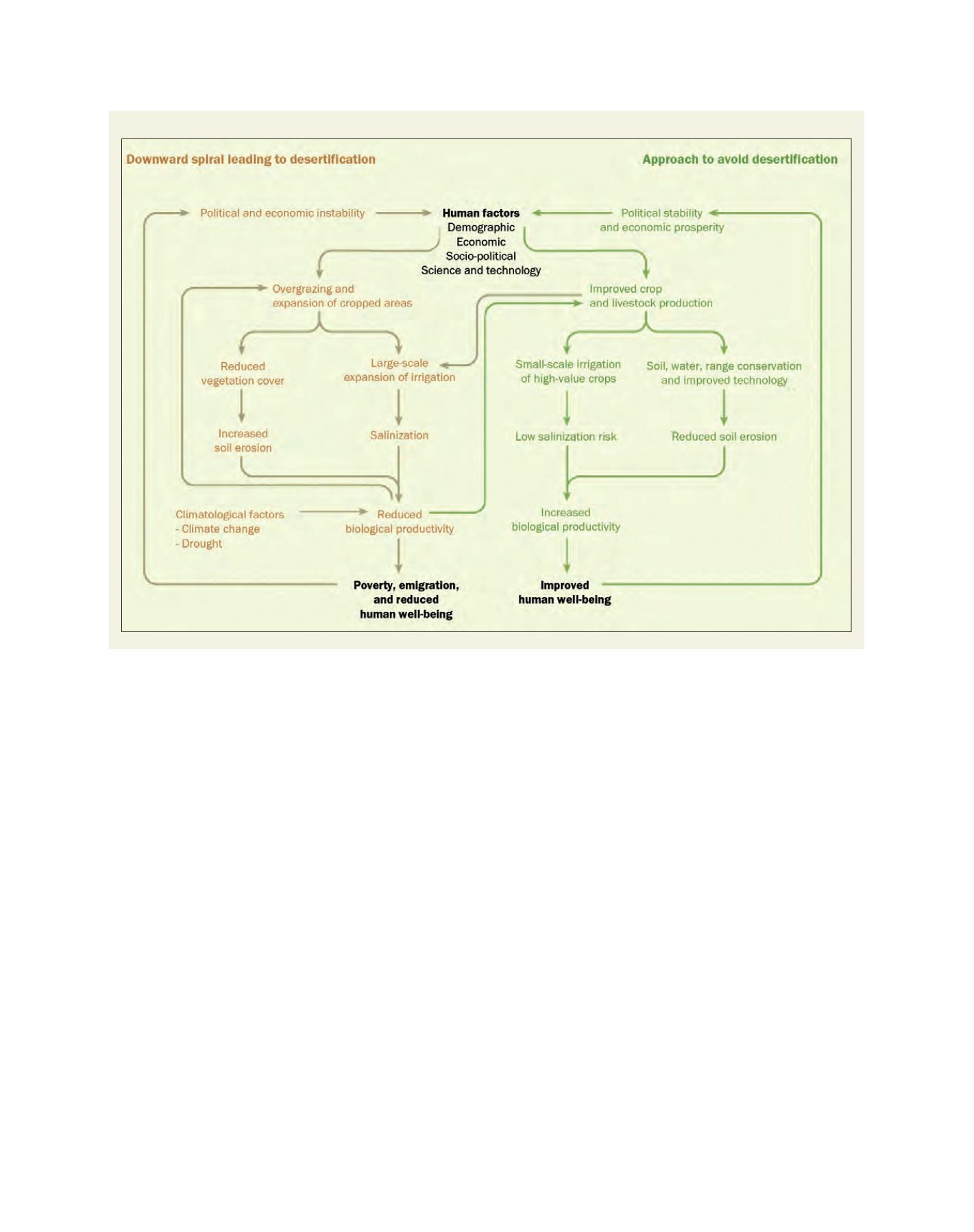

[
] 65
T
he
I
mpacTs
and
I
mplIcaTIons
of
c
lImaTe
c
hange
and
V
arIabIlITy
Coping strategies
The United Nations University (UNU) estimates that in 2010 there
will be up to 50 million environmental refugees. Therefore, former
UN Under-Secretary-General and UNU Rector Hans van Ginkel
has called for the recognition of environmental refugees within
international frameworks, while realizing that limited resources
already restrain the relevant global organizations’ capabilities
to deal with conventional refugees.
23
This is also reflected in a
proposal by the German Advisory Council on Global Change for
managing migration through cooperation and further developing
international law.
24
In relation to dryland development there are two partially
competing, scientific approaches – the ‘desertification para-
digm’ and the ‘counter-paradigm’.
25
The older, indeed fatal,
desertification paradigm states that drylands are basically stable
ecosystems which collapse when human influence exceeds
certain levels, and, most important, that few, if any, measures
exist to prevent this downward spiral. In the more recent and
scientifically supported counter-paradigm, this is only one of
two possible outcomes. It first states that deserts are by them-
selves unstable and therefore highly vulnerable areas. This does
not neglect human influence in land degradation – and its
sometimes disastrous outcomes – but puts it into the broader
picture of natural droughts and anomalies, which are still far
from being fully understood.
Following this counter-paradigm, it is also possible,
but dependent on social developments and political
decisions, to mitigate climate induced land degrada-
tion by using sustainable farming practices or integrated
water system management. Indeed, research has been
undertaken since 2001 in a series of international work-
shops on: the role of freshwater resources and other
possible rehabilitation of drylands; sustainable manage-
ment of marginal drylands; and on prevention of land
degradation through traditional knowledge and modern
technology.
26
Climate change and desertification, with all the
underlying factors and manifold consequences, will
not be defeated easily. There are, though, ways to
respond, mitigate and adapt effectively. In addition,
we no longer lack the ability to end poverty, one of
the main human drivers as well as impacts of deser-
tification.
27
But we seem to lack the political will
to combat it effectively. It is certain that we do still
lack scientific understanding of soils, their degrada-
tion and the human dimensions of desertification.
Therefore, we should prepare for growing numbers of
environmental refugees, both nationally and globally,
to prevent further political destabilization in devel-
oping countries.
28
Schematic description of development pathways in drylands
Source: Millennium Ecosystem Assessment (2005)
















